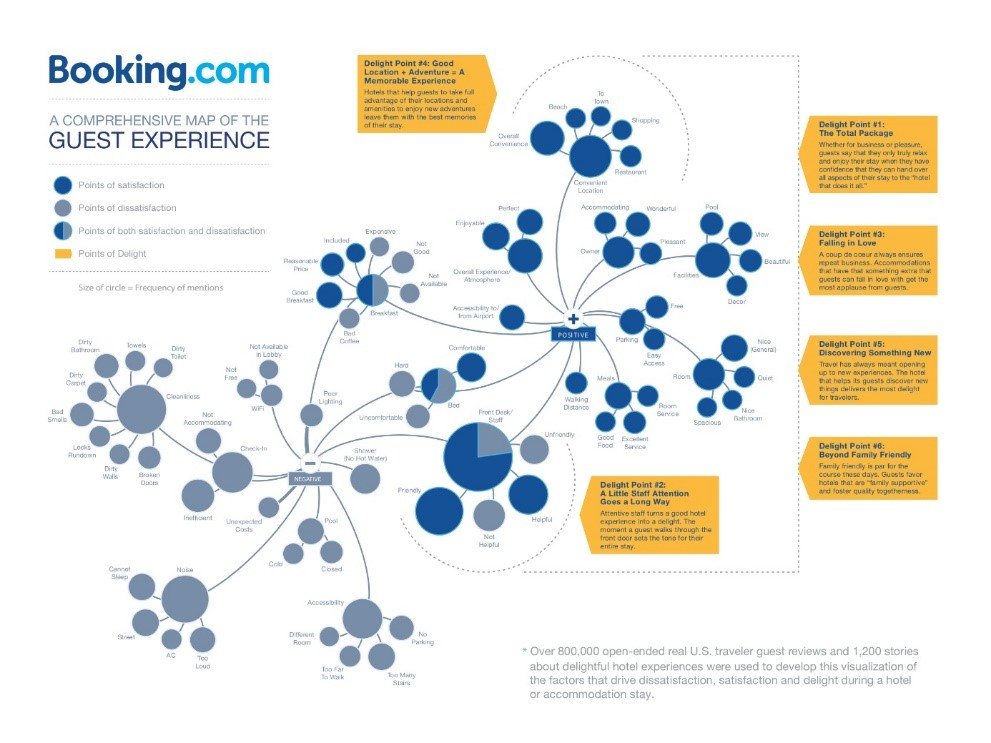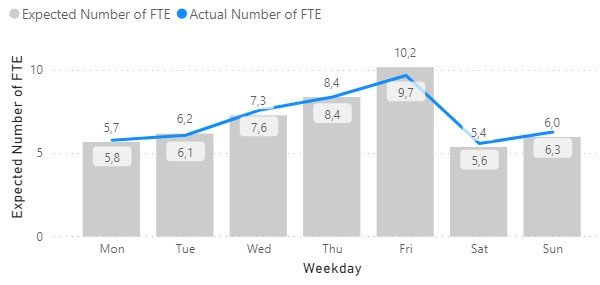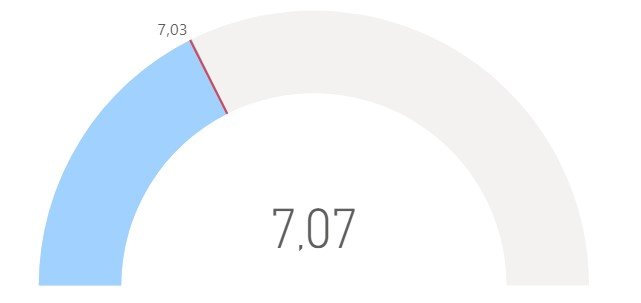Leveraging advanced business intelligence and data to maximise productivity
How can hoteliers develop a business intelligence system to track productivity of employees and extract relevant data to best forecast staffing needs and predict behaviour? Former Union Hotels director of strategic development, IT & HR, Gasper Zerovnik explores ways to become a more agile workforce using data and trend predictions.
Are you thinking that the vast amounts of data accumulated in your property management system could somehow be used to improve the overall productivity in your company? Well, if you do, you're probably right. But it is tricky and only the big companies with lots of resources are able to use all that data to their advantage, right? Well, not quite.
I have been working in the hospitality tech industry for the past 16 years. And for quite some time, I was thinking what you might be thinking: The systems the hospitality industry was and predominantly still is accustomed to using are complex, connected to many third party providers and sometimes not as open as you may wish them to be. I was certain that the data used in the hotel systems had potential, but was unsure on how independent hotels or smaller, independent hotel chains could leverage that data.
Back in 2013, Booking.com released a collection of travel insights with what it called: “the first truly honest look at the factors that drive the American traveller experience in hotels and other properties”, based on more than 800,000 guest reviews and 1,200 stories about hotel experiences.

Source: booking.com
In my opinion this is still very much relative to many if not most of today’s guest expectations. And as an example, we’ll use this insight as general guidance during maximisation of productivity to improve the points of delight and satisfaction and decrease the overall share of points of dissatisfaction. Of course, you might have your own data you’ll want to base your decisions upon.
Let’s first look at what some properties might be using to be as productive as possible and at the same time considering your guest’s expectations in these examples:
- a. Front desk: You’re probably posting weekly staffing rosters for the upcoming week. If your front desk has the capacity for more than one employee, you might already account the number of people during morning, evening and night shifts in your rosters following your property standards, expected occupancy levels and expected number of arriving and departing guests during the following week. You might also be taking into consideration any larger groups, other occurrences that might impact your overall workloads and your guests’ experience.
- b. Breakfast: If your property has tens, hundreds or even thousands of guests arriving at breakfast every morning, you’re probably dealing with planning the amounts of supplies of food and beverage, utensils, dishes and of course staff based upon the property’s occupancy level. From my experience, the F&B department is usually trying really hard keeping all these in check.
- c. Housekeeping: Keeping all the rooms clean, tidy and ready on time is a major undertaking, regardless of the size of the property. You might have set certain standards that state the average amount of time in which the rooms should be cleaned and inspected. You might also have variations on those times per different room types and sizes. You probably plan the workload according to your professional experiences and property standards and have the rooms assigned daily between the housekeeping staff.
Now you already might be doing all the above and then some, but here’s the catch. Based on the guest insights Booking.com has published, the check-in process is always regarded as a point of dissatisfaction, the same goes for the lack of space in the breakfast room that is usually quite common during peak seasons. The biggest point of dissatisfaction amongst all of the rest is the cleanliness. It seems that no matter the standard, guests will perceive these as negative. With that in mind our task should be to try and reduce these and at the same time maximise productivity as much as possible.
Here are a few ideas that might help you get started with making a significant impact in your organisation:
Analyse check-in and check-out times
Check-in and check-out times are perhaps much more important than they seem at first glance. By analysing the registered check-in and check-out patterns that you already have stored in your property management system you might get an additional insight on different peak times for each day. Your results might show that you have a consistent spread of check-ins/check-outs throughout the day or you might see that during weekdays there’s a peak in certain hours but not so much during weekends perhaps due to different business / leisure traveller ratio.

Check-out Times & Check-in Times – All time averages. Source: Generated sample data
Month-by-month analysis might also show that these are not fixed but change during different seasons and different months.
Check-out Times & Check-in Times - December vs. July averages:

December averages

July averages. Source: Generated sample data
This data could be then used to plan in greater detail the required number of front desk staff during peak hours and reduce the number of front desk staff during low hours. Usually the housekeeping staff would come to work all at the same time but leveraging this data you could even use it to a certain extent to plan the work for the housekeeping department according to actual current needs, so that your rooms can be spotlessly cleaned and in time for arrivals. This will allow you to achieve greater agility and you might even choose to discard certain outdated standards.
Forecast number of arrivals/departures:
Most of you probably already have some way of estimating future business occurrences. Most often these estimations are used to set and update the rates. Some of you might have advanced systems in place to assist you with this, which is totally awesome and some of you might make estimations from your past experiences, and that's fine as well. The general idea is to use the data you already have, as well as data you may use as the basis for adjusting your rates and predict your occupancy levels, and just apply those to some other aspects of your business needs.

Forecasted number of Guests arriving, Guests departing and Guests Staying. Source: Generated sample data.
Knowing how many guests will be arriving and departing for each day during the upcoming weeks and months could be applied to planning your required front desk and housekeeping staffing needs, planning the number of breakfasts and many other aspects of operations in greater detail and at the same time adjusting quickly to the market. from my experiences if you’re able to leverage this data from a reputable source such as an up-to-date revenue management system or a similar system, the level of accuracy can be incredible, with an error rate within only a few percent for the upcoming ten to 14 days.
Analyse guests’ arrival times at breakfast
By using your F&B system of just a spreadsheet to track the hours of your guests’ arrivals at breakfast you are able to analyse if patterns exist. similar to check-in and check-out analysis you might find out that you’re at certain moments experiencing a consistent spread throughout the morning hours or you might see that during certain days, months and seasons there’s a steep peak at certain hours but not so many visits during the rest of the morning. to decrease the impact or point of dissatisfaction due to the lack of available breakfast space and potential waiting times, you could communicate non-peak hours to your guests ahead and have them choose their preferred breakfast time. Moreover, you could to plan the right amount of F&B staff at the right times to achieve the highest possible guest satisfaction and at the same time not to have too much staff preset at times when there’s really no need for that.
Track the actual numbers and compare them to what you were planning
It’s a good idea to track you actual numbers, where it be the actual number of guest arrivals and departures or the number of hours used by your staff and compare those to what you were expecting.

Expected number of Front Desk FTEs vs. Actual number of Front Desk FTEs per Weekday

Expected weekly average number of Front Desk FTEs vs. Actual weekly average number of Front Desk FTEs
In the generated sample data, the difference between the expected number of weekly FTE averages and actual number of weekly FTE averages is less than 1%, which would most probably indicate that the criteria and the work process is set very well – extremely well even. However, if you encounter a big discrepancy between the two, there’s a very good chance that you need to analyse the work process and make additional optimizations or account for greater tolerances within your expectations.
Do it all and automate planning and reporting
The data collected during previous examples should be regularly updated, consolidated and its outputs automated to provide valuable and on-time support to teams:
- a. Front desk: Using the up-to-date analysis of the check-in and check-out times together with the currently forecasted number of arrivals, departures, property occupancy levels and expected hours used, could give your Front Desk valuable information to help them focus on improving the efficiency of the check-in and provide the attention guests deserve.
- b. Breakfast: Providing your F&B team accurate information of the number of guests and their expected times of arrival days and even weeks ahead will provide the F&B team with the tools to optimise inventory, plan the correct quantities and provide the right number of staff so that your guests will be delighted with your overall breakfast experience and have a daily.
- c. Housekeeping: Implementing the results of the check-in and check-out times analysis, together with the expected hours used, number of arrivals and departures and occupancy levels in your day-to-day planning will have your guests arriving to clean and inspected rooms. And at the same time providing immense support to managing and tracking the productivity of the Housekeeping team.
In order to achieve this you could use an already existing system that you might be using for analysing your other aspects of business, you could also opt for a business intelligence system that will allow you to consolidate your required data sources or if that’s not within your reach at the moment, you could also use a spreadsheet tool to regularly collect and consolidate your data.
By combining this data with the staff availability data you might have available in your time and attendance tracking system, you could even further optimise and even automate some of your processes of creating schedules and employee rosters; implementing safeguards to prevent inequalities and add a level of fairness to your team members and, at the same time, enable them to get the required and well-deserved down-time.
Keeping up with all the stakeholder’s expectations is never easy and having data to support your decision-making progress is as valuable as ever. The purpose of this article is to show that regardless of the size of your organisation even every day data can be used to create a system that will support and assist different departments with their daily tasks and create an agile team that can quickly adapt to market situations. Regardless of your organisation size and budget.
There’s no time like now to start. How would you use the data you already have stored in your systems to improve the overall productivity in your company?
Disclaimer: The opinions expressed in this article are my own and not necessarily those of my employer at the time of writing this article.
back
Share the article